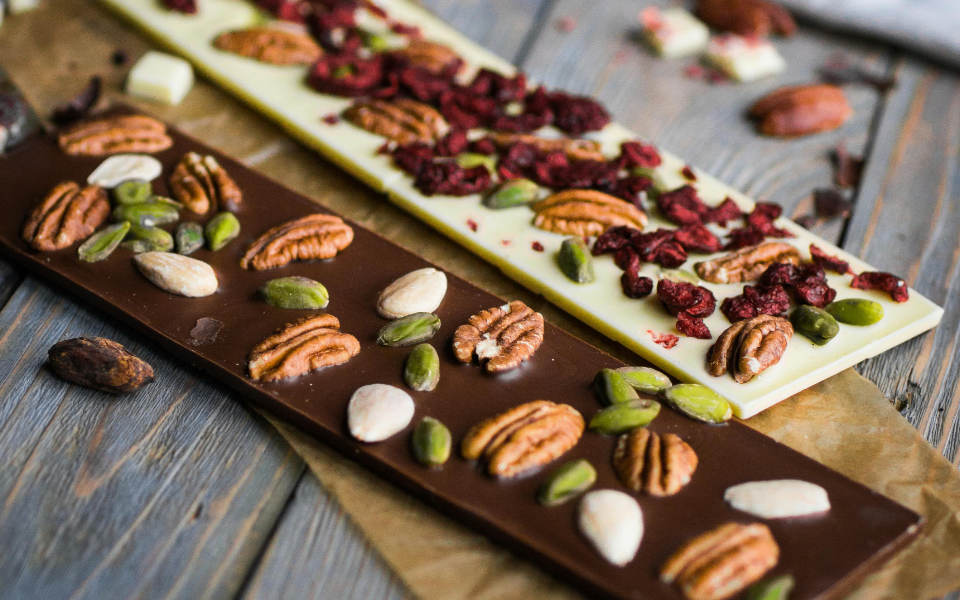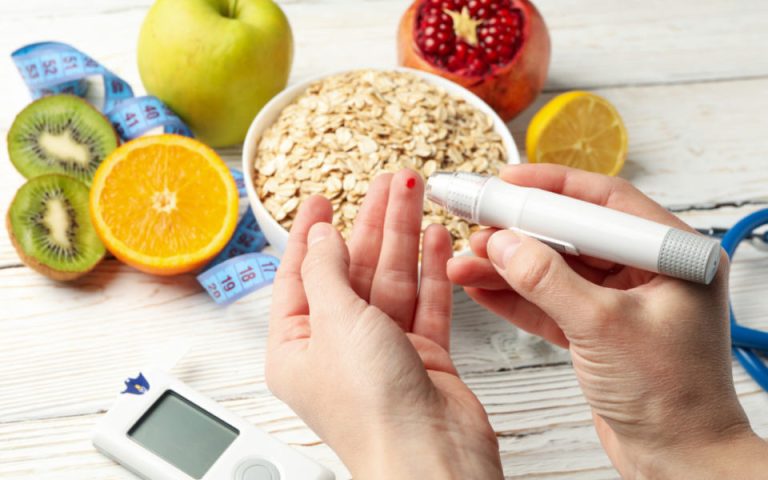Sugar cravings are an intense desire for sweet foods or drinks that can be difficult to resist. These cravings are extremely common, with some estimates suggesting that up to 97% of women and 68% of men experience food cravings, including those for sugar. The prevalence of sugar cravings is intensely concerning given the rising rates of obesity and diabetes worldwide.
There is a complex relationship between sugar cravings and diabetes. For people with diabetes, managing blood sugar levels is crucial, and giving in to sugar cravings can lead to dangerous spikes in blood glucose. Conversely, low blood sugar levels in diabetics can trigger intense cravings for sweets as the body tries to quickly raise glucose levels. This creates a challenging cycle for those with diabetes, as they must carefully balance their cravings with their need to maintain stable blood sugar.
Understanding Sugar Cravings
Sugar cravings are a strong urge or desire to consume foods or beverages high in sugar content. These cravings often feel intense and can be difficult to ignore or resist. A specific longing for sweet tastes typically describes them and can lead to overconsumption of sugary foods [1].
Common triggers for sugar cravings can be broadly categorised into psychological and physiological factors:
Psychological factors:
- Stress: Many people turn to sugary foods as comfort during stressful times [2].
- Emotions: Feelings such as sadness, boredom, or anxiety can trigger cravings for sweet foods [3].
- Habits: Regular consumption of sugary foods can create habitual cravings.
Physiological factors:
- Blood sugar imbalances: Low blood sugar levels can trigger cravings for quick energy in the form of sugar [4].
- Hormonal changes: Fluctuations in hormones, such as those during the menstrual cycle, can increase sugar cravings.
- Nutrient deficiencies: Lack of certain nutrients may lead to increased cravings for sugary foods [5].
The science behind sugar cravings involves complex brain reward systems. When we consume sugar, it activates the brain’s reward centre, releasing dopamine and creating a pleasurable sensation [6]. This reinforces the behaviour, making us more likely to seek out sugar in the future. From an evolutionary perspective, this mechanism was beneficial for our ancestors, encouraging them to consume high-calorie foods when they were scarce. However, in our modern environment of abundant, easily accessible sugary foods, this same system can lead to overconsumption and potential addiction-like behaviours around sugar.
Understanding these factors can help you better manage your sugar cravings and make informed decisions about your diet, which is specifically important for those with or at risk of diabetes.
Sugar Cravings and Diabetes: A Complex Relationship
1. How Diabetes Affects Sugar Cravings
Diabetes significantly impacts sugar cravings due to the body’s inability to regulate blood glucose levels effectively. People with diabetes often experience fluctuations in blood sugar that can intensify cravings for sweet foods. This is because the brain relies on a constant supply of glucose for energy, and when blood sugar levels are unstable, it can trigger cravings as the body requests to normalise glucose levels [7].
2. Impact of Blood Glucose Levels on Cravings
Blood glucose levels play a crucial role in sugar cravings. When blood sugar is high (hyperglycaemia), the body cannot effectively use the excess glucose due to insufficient insulin or insulin resistance. This paradoxically leads to increased hunger and cravings because the brain signals the need for more glucose to compensate for the perceived deficit. Conversely, low blood sugar levels (hypoglycaemia) can trigger intense cravings as the body searches for quick energy sources to raise blood glucose [8].
3. Insulin Resistance and Cravings
Insulin resistance, a hallmark of type 2 diabetes, worsens sugar cravings. When cells become resistant to insulin, glucose remains in the bloodstream instead of being used for energy. This condition leads to higher insulin levels, which can increase hunger and cravings for sugary foods as the body attempts to manage energy needs [9]. Over time, this can create a cycle of persistent high blood sugar and cravings, contributing to further insulin resistance and metabolic complications [10].
4. High Blood Sugar and Increased Hunger
High blood sugar levels create a vicious cycle of increased hunger and cravings. When blood glucose is elevated, the body struggles to use the excess sugar due to inadequate insulin. This leads to persistent hunger signals from the brain, prompting people to consume more food, often high in sugar, which further elevates blood glucose levels. This cycle can be specifically challenging for diabetics, as it complicates blood sugar management and increases the risk of complications.
5. Risks of Yielding to Sugar Cravings for Diabetics
For people with diabetes, succumbing to sugar cravings poses significant risks. Consuming high-sugar foods can lead to dangerous spikes in blood glucose levels, increasing the risk of acute complications such as hyperglycaemia and diabetic ketoacidosis. Long-term, frequent indulgence in sugary foods can contribute to poor glycemic control, leading to chronic complications such as cardiovascular disease, neuropathy, and retinopathy [11][12]. Therefore, managing sugar cravings is crucial for maintaining overall health and preventing complications in diabetics.
Understanding the complex relationship between diabetes and sugar cravings is essential for effective diabetes management. By recognising the physiological and psychological factors at play, you can develop strategies to manage cravings and maintain stable blood glucose levels.
Managing Sugar Cravings with Diabetes

Managing sugar cravings is crucial for people with diabetes to maintain stable blood glucose levels and overall health. This part outlines key strategies for blood sugar management, dietary approaches, and lifestyle changes to help control cravings and improve diabetes management.
1. Blood Sugar Management Strategies
Importance of Regular Blood Glucose Monitoring
Regular blood sugar monitoring is one of the most important aspects of diabetes management. It provides valuable information about how well your current treatment plan is working and helps you make informed decisions about food, physical activity, and insulin dose. The frequency of monitoring depends on individual factors, but it’s essential to work with your healthcare provider to determine the optimal schedule for you [13].
Taking Medication
Taking prescribed diabetes medications is crucial for managing blood sugar levels and reducing cravings. Medications help regulate glucose metabolism and can significantly impact your body’s ability to handle sugar intake. Consistent use of medications as prescribed by your healthcare provider is key to maintaining stable blood glucose levels.
2. Dietary Approaches
Low-Carb Food Choices
A low-carb diet typically involves consuming less than 130g of carbohydrates per day, can effectively manage blood sugar levels and reduce cravings in people with type 2 diabetes [14]. Focus on combining healthy, high-fibre carbohydrate sources such as:
- Pulses (beans, lentils)
- Nuts
- Vegetables
- Whole fruits
- Whole grains
Balanced Meals and Snacks
Creating balanced meals and snacks is essential for managing blood sugar levels and reducing cravings. Include a mix of:
- Lean proteins
- Healthy fats
- Complex carbohydrates
- Plenty of non-starchy vegetables
This combination helps slow down glucose absorption and provides sustained energy, reducing the likelihood of sudden blood sugar spikes and subsequent cravings.
Importance of Hydration
Staying well-hydrated is often overlooked but is crucial for managing sugar cravings. Sometimes, thirst can be mistaken for hunger or cravings. Ensure you drink plenty of water throughout the day to help curb unnecessary snacking and support overall health [15].
3. Lifestyle Changes
Regular Physical Activity
Engaging in regular physical activity helps manage blood sugar levels and reduce cravings. Exercise helps improve insulin sensitivity and can lower blood glucose levels. Try a combination of aerobic exercises and strength training, as recommended by your healthcare provider.
Stress Management Techniques
Stress can significantly impact blood sugar levels and increase cravings. Include stress-reduction techniques such as:
- Mindfulness meditation
- Deep breathing exercises
- Progressive muscle relaxation
These practices can help manage stress-induced cravings and improve overall diabetes management [16].
Adequate Sleep
Getting sufficient quality sleep is crucial for managing sugar cravings and blood glucose levels. Poor sleep can disrupt hormones that regulate hunger and fullness, potentially leading to increased cravings. Try about 7 hours of sleep per night and maintain a consistent sleep schedule.
By implementing these strategies, people with diabetes can better manage their sugar cravings, maintain more stable blood glucose levels, and improve their overall health. Remember that managing diabetes is a personalised process, and it’s essential to work closely with your healthcare team to develop a plan that works best for you.
Healthy Alternatives to Satisfy Sweet Cravings

Finding healthy alternatives to satisfy sweet cravings is crucial for maintaining stable blood sugar levels while still enjoying treats. Here are some options and strategies to help manage sweet cravings:
1. Low-Glycemic Fruit Options
Low-glycemic fruits are good choices for satisfying sweet cravings without causing significant blood sugar spikes. Some good options include:
- Berries: Strawberries, raspberries, and blackberries are low in sugar and high in fibre.
- Cherries: With a glycemic index of 20-25, cherries are a great low-sugar option.
- Grapefruit: This citrus fruit has a glycemic index of 26 and is low in sugar.
- Apples and pears: These fruits have a glycemic index of 30-36 and are high in fibre.
These fruits not only satisfy sweet cravings but also provide essential nutrients and antioxidants.
2. Sugar-Free or Low-Sugar Treats
There are many commercially available sugar-free or low-sugar treats made for people with diabetes:
- Sugar-free dark chocolate.
- Sugar-free cookies.
- Protein bars.
3. Natural Sweeteners and Their Impact on Blood Sugar
Natural sweeteners can be used as alternatives to sugar, but it’s important to understand their impact on blood sugar:
- Stevia: A zero-calorie sweetener that doesn’t affect blood sugar levels.
- Monk fruit: Another zero-calorie option that doesn’t raise blood sugar.
- Allulose: A low-calorie sweetener that has minimal impact on blood sugar levels.
When using these sweeteners, it’s still important to consume them in moderation and as part of a balanced diet.
4. Recipe Ideas for Diabetic-Friendly Desserts
Creating homemade desserts allows for better control over ingredients and portion sizes. Here are some ideas:
- Berry parfait: Layer Greek yoghurt with mixed berries and a sprinkle of chopped nuts for a low-sugar, high-protein treat.
- Baked apples: Core apples, fill with a mixture of oats, cinnamon, and a small amount of natural sweetener, then bake until tender.
- Avocado chocolate mousse: Blend ripe avocados with unsweetened cocoa powder and a small amount of natural sweetener for a rich, creamy dessert.
Remember, while these alternatives can help satisfy sweet cravings, it’s essential to monitor portion sizes and combine them into a balanced diet.
Psychological Strategies for Overcoming Sugar Cravings
Managing sugar cravings often requires addressing the psychological aspects that drive these urges. Here are some effective strategies to help overcome sugar cravings:
1. Mindful Eating Practices
Mindful eating is a powerful tool for managing cravings and developing a healthier relationship with food. Key practices include:
- Eating slowly and without distractions: Focus on your meal, avoiding TV, phones, or other distractions.
- Paying attention to physical hunger cues: Learn to distinguish between true hunger and emotional cravings.
- Engaging all senses: Notice the colours, smells, textures, and flavours of your food.
- Practising gratitude: Take a moment to appreciate your food before eating.
- Stopping when full: Learn to recognise and respect your body’s fullness signals.
Research shows that mindful eating can reduce binge eating episodes and improve overall eating behaviours [17].
2. Cognitive Behavioural Techniques
Cognitive Behavioural Therapy (CBT) offers several techniques to manage sugar cravings:
- Thought challenging: Identify and challenge negative thoughts about food and eating.
- Behavioural experiments: Test out new behaviours around food to challenge existing beliefs.
- Goal setting: Set realistic, achievable goals for changing eating habits.
- Self-monitoring: Keep a food diary to increase awareness of eating patterns.
- Stimulus control: Modify your environment to reduce exposure to triggering foods.
One effective CBT technique is the ‘Internal Remote Control’ exercise [18]:
- When a craving hits, mentally “pause” and visualise giving in to the craving.
- Fast forward to how you’ll feel afterwards (often guilty or disappointed).
- Rewind and visualise not giving in to the craving.
- Play out this scenario and focus on the positive feelings of being in control.
3. Identifying and Addressing Emotional Eating Triggers
Emotional eating often drives sugar cravings. To address this:
- Keep an emotional eating diary: Note what you eat, when, and how you’re feeling.
- Identify your triggers: Common triggers include stress, boredom, loneliness, or anxiety.
- Develop alternative coping strategies: For each trigger, plan a non-food related activity (e.g., deep breathing for stress, calling a friend for loneliness).
- Practice stress management techniques: Regular exercise or meditation can help manage overall stress levels.
- Seek support: Consider talking to a therapist or joining a support group if emotional eating is a significant issue.
Remember, overcoming sugar cravings is a process that requires patience and practice. These psychological strategies, combined with dietary and lifestyle changes, can help you gain control over your cravings and develop a healthier relationship with food.
When to Seek Professional Help

1. Signs That Sugar Cravings Are Becoming Problematic
Sugar cravings can become problematic when they start to interfere with your daily life and health. Here are some signs that may indicate it’s time to seek professional help:
- Loss of Control: You find it difficult to stop eating sugary foods once you start or consume more than you intended despite efforts to cut back.
- Frequent Cravings: Persistent and intense cravings for sugar that occur multiple times a day.
- Emotional Eating: You often turn to sugary foods to cope with stress, sadness, boredom, or other emotions.
- Negative Impact on Health: Your sugar consumption is leading to weight gain, poor blood sugar control, or other health issues.
- Interference with Daily Life: Cravings disrupt your daily activities, work, or social interactions.
- Feelings of Guilt or Shame: You feel guilty or ashamed about your sugar consumption but find it hard to change your behaviour.
2. Working with a Health Professional
Managing problematic sugar cravings often requires a multidisciplinary approach. Here are the key professionals who can help:
- Endocrinologist: A diabetes specialist who can help manage blood sugar levels and address any hormonal imbalances contributing to cravings.
- Dietitian: Provides personalised dietary advice to help manage cravings and ensure nutritional needs are met. They can help create a balanced eating plan that reduces sugar intake.
- Psychologist: Can help address the psychological aspects of cravings, such as emotional eating and stress management. Cognitive Behavioural Therapy (CBT) and other techniques can be effective.
- Primary Care Physician (GP): Coordinates your overall care and can refer you to specialists as needed. They can also monitor your general health and any related conditions.
- Diabetes Specialist/Coach: Offers support and education on managing diabetes, including how to handle sugar cravings.
3. Potential Underlying Conditions to Rule Out
Persistent sugar cravings can sometimes be a sign of underlying health issues. It’s important to rule out these conditions with the help of your healthcare provider:
- Hypoglycaemia: Low blood sugar levels can trigger intense cravings for sugary foods as the body seeks quick energy.
- Insulin Resistance: Often associated with type 2 diabetes, insulin resistance can lead to unstable blood sugar levels and increased cravings.
- Nutrient Deficiencies: Deficiencies in certain nutrients, such as magnesium or chromium, can lead to increased sugar cravings.
- Hormonal Imbalances: Conditions like polycystic ovary syndrome (PCOS) can affect hormone levels and lead to cravings.
- Mental Health Conditions: Depression, anxiety, and other mental health issues can contribute to emotional eating and sugar cravings.
By recognising when sugar cravings become problematic and seeking help from a healthcare provider, you can better manage your cravings and improve your overall health.
Sustainable Habits for Managing Cravings and Diabetes
Achieving long-term success in managing sugar cravings and diabetes requires developing sustainable habits and a comprehensive approach to health. Here are key strategies for maintaining control over cravings and diabetes in the long run:
1. Creating a Balanced Lifestyle
- Consistent Meal Schedule: Establish a regular eating pattern to help stabilise blood sugar levels and reduce cravings.
- Balanced Nutrition: Focus on a diet rich in whole foods, including lean proteins, healthy fats, complex carbohydrates, and plenty of vegetables.
- Regular Physical Activity: Integrate a mix of aerobic and muscle-strengthening exercises into your routine, as recommended by your healthcare provider.
- Stress Management: Practice stress-reduction techniques such as meditation and deep breathing to help manage emotional triggers for cravings.
- Adequate Sleep: Prioritise getting about 7 hours of quality sleep per night to help regulate hormones that affect hunger and cravings.
2. Building a Support System
- Family Involvement: Diabetes is sometimes called a “family disease” because its management affects all family members. Educate and involve your family in your diabetes care plan.
- Peer Support: Connect with other people living with diabetes through support groups or online communities to share experiences and coping strategies.
- Healthcare Provider: Establish a strong relationship with your healthcare providers, including your endocrinologist, dietitian, and diabetes educator.
- Workplace Support: If applicable, inform your colleagues and supervisors about your condition to ensure a supportive work environment.
- Community Resources: Use local diabetes education programs and community health initiatives for additional support and education.
3. Regular Check-ins and Changes to Management
- Routine Medical Appointments: Schedule regular check-ups with your healthcare provider to monitor your progress and address any concerns.
- Blood Glucose Monitoring: Regularly test your blood sugar levels as recommended by your healthcare provider and keep a log of the results.
- HbA1c Tests: Have your HbA1c levels checked every 3-6 months to assess your long-term blood sugar control.
- Medication Reviews: Regularly review your medication regimen with your doctor to ensure it’s still effective and appropriate for your current needs.
- Lifestyle Reassessment: Consistently evaluate your diet, exercise routine, and stress management techniques, making changes as needed to maintain optimal health.
- Goal Setting: Work with your healthcare provider to set realistic, achievable goals for your diabetes management and regularly review and update these goals.
- Continuous Education: Stay informed about new developments in diabetes management through reputable sources and diabetes education programs.
By implementing these strategies, you can create a sustainable approach to managing both sugar cravings and diabetes. Remember that long-term success is about consistency and adaptability. Be patient with yourself, celebrate small wins, and don’t hesitate to seek support when needed. With the right habits and support system in place, you can effectively manage your diabetes and lead a healthy, fulfilling life.
Conclusion
Managing sugar cravings is a big challenge for people with diabetes, but understanding the complexities and employing effective strategies can lead to better health outcomes. Here are the key points covered in this article:
- Understanding Sugar Cravings: Sugar cravings are driven by psychological and physiological factors, including stress, emotions, blood sugar imbalances, and hormonal changes.
- Sugar Cravings and Diabetes: Diabetes affects sugar cravings through mechanisms like blood glucose fluctuations and insulin resistance, creating a cycle of high blood sugar and increased hunger.
- Managing Sugar Cravings: Effective management involves regular blood glucose monitoring, taking medication, balanced dietary choices, hydration, and lifestyle changes such as regular physical activity, stress management, and adequate sleep.
- Healthy Alternatives: Low-glycemic fruits, sugar-free treats, natural sweeteners, and diabetic-friendly recipes can help satisfy sweet cravings without compromising blood sugar control.
- Psychological Strategies: Mindful eating, cognitive behavioural techniques, and addressing emotional eating triggers are crucial for overcoming sugar cravings.
- Seeking Professional Help: Recognising when cravings become problematic and working with a health professional can provide personalised support and address underlying conditions.
- Long-term Success: Sustainable habits, a strong support system, and regular check-ins with healthcare providers are essential for managing cravings and diabetes effectively.
Living with diabetes and managing sugar cravings can be daunting, but remember, you are not alone. Many have faced these challenges and found ways to thrive. Here are some empowering messages to keep you motivated:
- “Whether you think you can, or you think you can’t – you’re right.” – Henry Ford.
- Your mindset plays a crucial role in managing diabetes. Believe in your ability to make positive changes.
- “Diabetes does not define me, but it helps shape who I am.” – Amanda Quinne.
- Embrace your journey with diabetes as part of your unique story, but don’t let it limit your potential.
- “Life is not over because you have diabetes. Make the most of what you have, be grateful.” – Dale Evans.
- Focus on the positives and the opportunities to live a fulfilling life despite the challenges.
- “You have been criticizing yourself for years, and it hasn’t worked. Try approving of yourself and see what happens.” – Louise L. Hay.
- Practice self-compassion and recognise your efforts and progress.
- “Nobody can go back and start a new beginning, but anyone can start today and make a new ending.” – Maria Robinson.
- Every day is a new opportunity to make healthier choices and improve your diabetes management.
Remember, managing diabetes is a continuous journey that requires patience, resilience, and support. Celebrate your small wins, stay connected with your support system, and keep striving for better health. You have the strength and resources to manage your diabetes and live a vibrant, fulfilling life.
Stay Informed & Inspired with Our Newsletter
Sign up for our newsletter to stay informed about the latest updates, episodes, helpful tips and strategies for diabetes management and holistic wellness.


